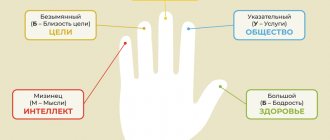Home / Situations
Back
Published: November 28, 2019
Reading time: 3 min
4
1374
Complaints about calls from suspicious strangers are becoming more common. The reason for the conversation is opinion polls, advertising, invitations to events, fictitious manipulations with a bank card. The result of a conversation with a scammer may be the loss of a certain amount of money if you are not warned about the methods of deception.
And we will warn you.
- Psychological reception
- How to understand that this is a phone scammer
- Why would scammers want a voice recording, especially with the word “yes”
- Blackmail
- Making purchases or connecting services
- Effective ways to keep yourself as safe as possible. Examples of correct answers
Psychological reception
The rule of three “yes” is a favorite psychological technique with which you can manipulate your interlocutor. After all, if you answered “yes” twice, then the likelihood that you will agree a third time is quite high. This can be used to impose services, leading to the desired answer.
The simplest example:
- Hello. Ivan Ivanovich? - Yes. -Can you hear me well? - Yes. ‒ Would you like to consider switching to our new tariff?
Unusual and funny ways to sell pens
If the standard methods seem too boring and tried-and-true to you, or if nothing worked, then you can use unusual methods of selling pens. We warn you - not every employer will appreciate such humor. On the other hand, the goal has been achieved, isn’t it?
Provocation to buy
You can provoke the employer in any way. For example, ask him if he himself can sell a pen at an interview? Or ask for a master class, assuring that he is so experienced and professional and, of course, will be able to complete the task brilliantly.
If the interlocutor is led to provocation, he will need a pen. And he already gave it to you. So it will be enough to offer to buy it from you to prove your abilities or conduct a master class.
Pick up and leave
Anecdotal, but quite effective, this method is not for the faint of heart. Great if the pen is expensive or memorable - for example, with engraving. That is, valuable and possibly important for the employer.
The point is that the first time you refuse a purchase, you need to put it in your pocket, turn around and leave. With a high degree of probability, they will hear: “You forgot to give the pen!” In this case, it’s enough to turn around and try to sell it again: “Do you want to pick up your pen? Buy it from me!
Offer to sign
A similar technique was used in the film The Wolf of Wall Street. Only there they asked for an autograph. But you don’t have to be so banal, do you? For example, you can offer to sign a note stating that the person was at an interview.
The main thing is to force a person to grab a handle that he does not have. And then say: “Oh, you don’t have a pen to sign? I'm ready to offer you mine. Just 50 rubles - and it’s yours!”
Catch questions
Psychological way to react. Immediately after the employer has given the task, you need to ask him again about the essence of the task, placing a little emphasis on the word “want”:
– Do you want me to sell you this pen?
- Yes.
– Great, I’m ready to sell it to you. 50 rubles from you.
An employer simply won’t have time to switch to the role of a buyer in a few seconds. He will answer automatically, thinking that he confirms the essence of the task. You will have time to become a “seller”, and with your answer “buyer” will confirm your intention to sell the pen. A way for resourceful and risk-taking people - the employer can laugh with you, or he can force you to pass the interview normally. If we get lucky.
How to understand that this is a phone scammer
Work, online shopping, emergency - this is an incomplete list of reasons why you will have to accept a call from an unknown subscriber. But such calls should be treated very carefully.
Signs that should alert you:
- The interlocutor “forgets” to introduce himself . He pronounces the name of the organization in such a way that it is impossible to make out it.
- They persistently demand “yes” or “no” answers from you . To do this, criminals may call late at night when the victim is disoriented.
- The fraudster impersonates a bank employee by calling from a mobile number . A security officer will never call from a “regular” cell number.
- During the conversation, the caller constantly pauses . The system is slow due to voice recording.
- Suspicious noises are heard in the background.
Classic stages of sales - a little theory
When going for an interview for the position of sales manager, consultant, or anyone else related to trade, you should assume such testing in advance. You need to psychologically tune in a certain way - calm down, collect your thoughts and imagine what could be useful to a manager or HR officer.
To sell something, even if someone doesn’t really need it, you need to have a rough idea of how it’s done. And selling pens is no exception. Any attempt of this kind is based on psychology. So, what stages should a job seeker go through in the classic process of selling a pen to an employer?
Preparation for sale
Before you sell something, you need to carefully study the product. It is worth asking the employer for one or two minutes to prepare. This is normal, don't be afraid. It is unlikely that he will refuse - as a manager, he must imagine that it is impossible to sell something without knowledge of the product.
What to look for when preparing? There are several important pen parameters:
- expected value for the client (image, practical, visual, etc.);
- external parameters (expensive or cheap in appearance);
- company manufacturer;
- features (ink, two-pin, metal, heavy, etc.);
- possibilities (writes upside down, underwater, in space, on an uneven surface, etc.).
In addition, during preparation you need to come up with the name of your company. Remember: you are playing the role of a real seller. And what kind of seller works without a company or at least a big name? It’s also worth studying the interviewee’s office, its external features and roughly estimating what he might want. Then these estimates will need to be clarified with him himself.
Greeting and making contact
An important part of selling is establishing contact with the client. It is important that he pays attention to the seller and is ready to devote time to him. To achieve this effect, it is important not just to say hello and introduce yourself, but also to provoke the person into a response dialogue. Example:
– Hello, my name is Anton and I represent. How should I address you?
At the same time, you need to behave politely, look friendly and smile. It will be ideal if you can establish visual contact with the client. The response of an ordinary person will not be long in coming - he will automatically say hello and introduce himself. And this is success.
Identifying needs or pain points
Once you have established contact with a person, you need to find out what their needs are. But this must be done carefully. It is best to ask questions that are likely to have a positive answer and relate directly to the person. Or which will stimulate further dialogue and provide more information.
Let's say our Anton from Ruchka Limited is interviewing for a private university with paid classes, and his responsibility will be to attract potential students. And his dean or rector will interview him. What requirements does such a person place on a pen? And what is important to him? This is what we need to find out with questions. A few examples:
- – I see you are the dean/rector of this university. You probably have a lot of paperwork, do you constantly need to sign something?
- – You occupy such a high position at work. What accessories do you think could highlight your image and solidity?
- – You probably have a lot to do. Tell me, do you write down important meetings or tasks in a notebook?
- – Tell me, do students and teachers often come up to you to sign something, but you don’t have a pen in your pocket?
And stuff like that. The questions can be anything related to the topic - the main thing is to find out more information about what a person would like to get from buying a pen. That is, needs or even “pains”.
Presentation
Once you have figured out the necessary information, it is time to present the pen. In the process, you need to present its qualities, positive aspects and direct benefits to the buyer.
Important! There is no need to stress on the characteristics of the pen itself. You need to show its benefits to the client.
That is, there is no need to say: “the pen writes on uneven surfaces.” It’s better to say: “you can fill out documents anywhere, and you don’t have to look for a flat surface.”
In this case, you need to rely on the information received from the client. Let's return to Anton, who is having an interview with the rector. The latter, for example, answered him that yes, he has a lot of paperwork, and people often come up to him to sign papers (they almost push him under the toilet stall doors). How to present a pen to such a client? Example:
– I’m ready to offer you a pen that you can always carry with you. It is not too big and will fit into any pocket. It doesn't leak, so you won't stain your clothes. It also has a large supply of ink - with active use it lasts for six months. In addition, you can write with it wherever and however you want - even on the ceiling or on a very uneven surface.
This way you will cover the key needs of the client:
- A lot of paperwork means ink doesn't run out for a long time.
- Small - it will be convenient to carry with you and sign documents outside the office.
- Doesn’t leak – when carried in a pocket, it won’t ruin clothes (we’ll close one objection right away).
- Writes anywhere - you can lean on a wall, knee, fabric, etc. to write something.
During the presentation, you can casually mention some qualities that are not related to the information provided by the client. For example, that she writes even in space. This characteristic will not be useful to the client, but it hints at the quality of the pen.
In general, it is important not just to listen, but also to hear the client and imagine how your product can help him.
Handling objections
As a rule, a person may have objections after presenting the pen. This is a situation where a person is not sure what he wants to buy and is trying to approach the matter rationally. Examples of objections:
- I already have a pen, why do I need another one?
- I'm not sure about the quality of your pen. Why should I trust you?
- The pen is good, but too expensive. I'm not ready to buy it.
- I don't need a pen; I have a secretary to sign documents.
And so on. If you really want to, you can come up with dozens of objections. And you need to learn to answer them correctly. Sample responses to the proposed objections:
- The pen may run out of ink/it tends to get lost - so I suggest buying you a spare one; You can leave one in your office and carry the other with you. By the way, ours doesn’t leak, so you won’t get your suit dirty.
- I assure you, I am ready to vouch for the quality of my pen. I give a guarantee. If it doesn’t suit you, you can easily exchange it for a new one or get your money back within two weeks.
- I'm ready to give you a 20% discount. But only for you and in great confidence.
- What if the secretary suddenly gets sick or leaves? Would a business partner want to sign documents immediately, without wasting time looking for a secretary? In addition, sometimes when talking on the phone it is very convenient to write down important information.
It is important to close the client's objections. If you do this, he will have much less doubt about the purchase.
Sometimes it happens that the client persuades not so much the seller, but himself - after all, with so many objections, it is irrational to buy a pen! Consequently, he will already be inclined to purchase the product - it is only important to push him towards this.
Why would scammers want a voice recording, especially with the word “yes”
The main threat that potential victims of telephone scams are warned about is the use of voice recordings to transfer money from a card or account. In reality, the likelihood of theft is minimal, even if you have signed consent to the processing of biometric data. For all significant financial transactions, you will have to communicate directly with a bank employee. He will ask questions that cannot be answered with a set of cliched phrases. In addition, the algorithm recognizes voice recording at any stage.
Blackmail
A working fraud scheme is the creation of an audio recording that discredits the honor of a potential victim. With the help of answers recorded by the robot, a person can, for example, “negotiate” the purchase of sexual services or drugs. By sending such a recording by email, the scammer will demand payment for silence.
Criminals also turned to their advantage from rumors about money being written off from a card using a voice recording. Now they are scaring gullible citizens with the possibility of accessing accounts, demanding payment for deleting data. These threats are baseless and harmless.
Making purchases or connecting services
This type of fraud is possible, for example, with some telephone operators. The contract with them contains a clause on the possibility of voice confirmation of the purchase of services from third parties. If you find an illegally connected subscription, contact your mobile operator to find out more details and stop charging money.
Rule of Five
Three sigma rule 3. normally distributed.
curve. three sigma rule With the release of the eleventh standard, the rule has expanded and is now called the rule of five. Now when implementing the constructor you need to implement:
- Destructor
- Copy constructor
- Copy assignment operator
- Move constructor
- Move Assignment Operator
Example of the rule of five:
1 #include 2 3 class RFive 4 { 5 private 6 char* cstring; 7 8 public 9 // Constructor with initialization list and body 10 RFive(const char* arg) 11 cstring(new charstd::strlen(arg)+1]) 12 { 13 std::strcpy(cstring, arg); 14 } 15 16 // Destructor 17 ~RFive() 18 { 19 delete[] cstring; 20 } 21 22 // Copy constructor 23 RFive(const RFive& other) 24 { 25 cstring = new charstd::strlen(other.cstring) + 1]; 26 std::strcpy(cstring, other.cstring); 27 } 28 29 // Move constructor, noexcept - for optimization when using standard containers 30 RFive(RFive&& other) noexcept 31 { 32 cstring = other.cstring; 33 other.cstring = NULLptr; 34 } 35 36 // Copy assignment operator 37 RFive& operator=(const RFive& other) 38 { 39 if (this == &other) 40 return *this; 41 42 char* tmp_cstring = new charstd::strlen(other.cstring) + 1]; 43 std::strcpy(tmp_cstring, other.cstring); 44 delete[] cstring; 45 cstring = tmp_cstring; 46 return *this; 47 } 48 49 // Move assignment operator 50 RFive& operator=(RFive&& other) noexcept 51 { 52 if (this == &other) 53 return *this; 54 55 delete[] cstring; 56 cstring = other.cstring; 57 other.cstring = NULLptr; 58 return *this; 59 } 60 61 // You can also replace both assignment operators with the following operator 62 // RFive& operator=(RFive other) 63 // { 64 // std::swap(cstring, other.cstring); 65 // return *this; 66 // } 67 };











